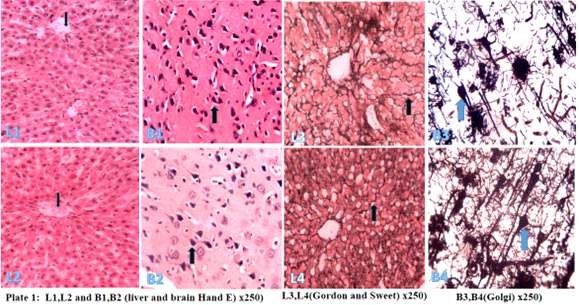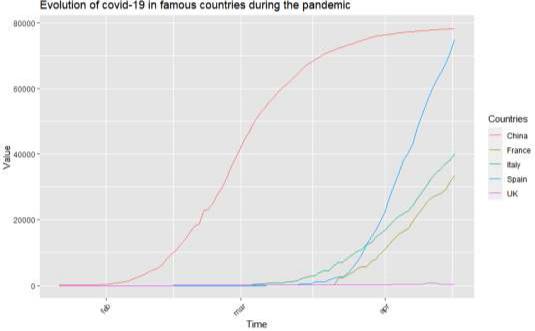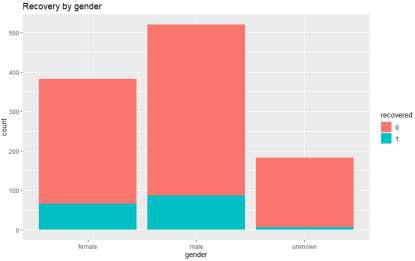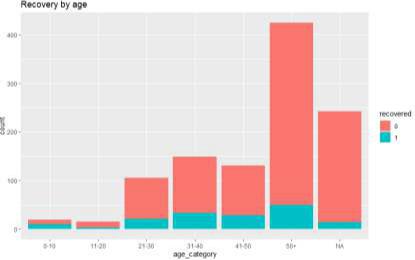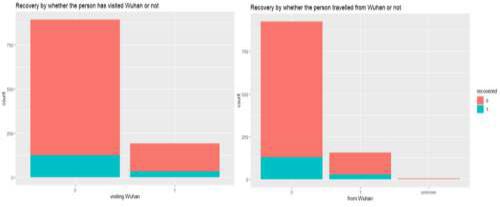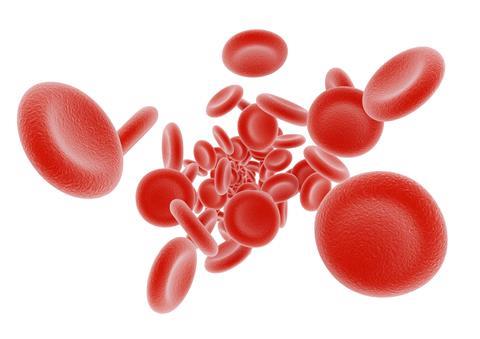Solanum esculentum ameliorates paraquat-induced Cerebellar and Cervical spinal lesions in Wistar Rats.

Sadeeq AA, Amos A, Bauchi ZM, Tanko M and AI Mukthar
Department of Human Anatomy, Neuroscience Unit, Faculty of Basic Medical Sciences, Ahmadu Bello University, Zaria. Nigeria.
Muhammad Z
Department of Human Anatomy, Faculty of Basic Medical sciences, Damaturu, Yobe state University. Nigeria.
El-ladan IS
Department of Human Anatomy, Faculty of Basic Medical Sciences, Umaru Musa Yar’addua University, Katsina, Nigeria.
El-ladan IS
Department of Forensic Sciences, School of Basic and Applied Sciences, Golgotia University, Uttar Pradesh, India
Rilwan BH
Department of Human Anatomy, Faculty of Basic Medical Sciences, Kaduna State University, Kaduna, Nigeria.
All Correspondences to: SadeeqAA, Neuroscience unit, Department of Human Anatomy, Faculty of Basic Medical Sciences, College of Medical Sciences, Ahmadu Bello University, Zaria. e-mail:aasadeequ@gmail.com
ABSTRACT
The herbicide Paraquat, is a superoxide generator that harm neurons, chunk motor axon conduction,and impair locomotive activities.This study evaluates the ameliorative effects of ethanolic extract of tomato (Solanum esculentum) on Paraquat-induced cerebellar cortex and cervical spinal nerve segment lesion of adult Wistar rats. Twenty (20) apparently healthy rats averagely weighing 144g were divided into five groups of four animals each. Group I (control) received normal saline. GroupsII, III and IV were administered 30mg/kg of Paraquat,were administered 30mg/kg of Paraquat followed by tomato extract (1500mg/kg and750mg/kg respectively). Groups Vwere treated with 1500mg/kg tomato extract only. Treatments was via oral route and lasted for twelve consecutive days. Gripstrength and Footprint test for motor coordination and balance were the neurobehavioral studies carried out to ascertain effects on motor coordination.Cervical spinal nerves segment and cerebellar tissue were accessed by opening the hollow vertebral column and sutures of the skull respectively. Tissues were fixed in Bouins fluid, processed using routine Histological stain H and E.Cyto-morphometric evaluation for cell volume and number using a digimizer v4.0 was carried out. Graphad prism v8.0.1 was used for the analysis. Treatment with Paraquat dichloride impaired motor activities of the forelimbs and balance coordination with significant decrease in time taken to release the grip wire (0.01) with an increase in numbers of foot slip that was significant(0.01).Histopathological changes such as nuclei fragmentation or loss and vacoulation were observed in the cerebellum and cervical spinal segment of the spinal cord. However, administration of tomato extract revealed a neuroprotective potential to the spinal cord by improvement in the footprint distance relative to the control;histopathological lesionswere ameliorated in the treated group whencompared with the control.
Keywords:Paraquat, solanum esculentum, Cerebellum, cervical Spinal segment,foot print, motor coordination and balance.
INTRODUCTION
Paraquat is a wild acting, non-selective bipyridylium herbicide extensively used in numerous countries in the world due to the stumpy cost and efficacy against a range of weeds (Costa et al., 2014). It is a quaternary nitrogen herbicide with chemical name 1,1′- dimethyl 4,4′-bipyridinium (Raghu etal., 2013). Which is extremelylethal to both humans and animals by all routes of exposure, and is labelled with a Danger-Poison signal word.Paraquat has been used for withering of seed crops, weed control in orchard; defoliation and desiccation of cotton; as harvest aid in soya bean, sugar cane and for killing dormant plants (Ecobichon, 1991; Raghu et al., 2013).
Paraquat through blood stream it reaches all the areas of the body, leading to lung damage, liver and kidney damage (Podpresartet al., 2007). Inhalation of this herbicide can lead to sore nose and throat and nose bleeding (Baharuddinet al., 2011). Dermal contact can lead to mild irritation, ulceration, blisters, desquamation (loosing of outer skin layer), necrosis and second degree burns (Marrs and Adjei, 2003). Contact with the eye can lead to eye irritation, inflamed eyelids and decreased visual acuity (Wineket al., 2001).Paraquat was revealed to have cause drop in neurotransmitters (Qamar at al., 2013), dead of both matured and immature cerebellar granule neaurons (Stelmashooket al., 2007), caused cerebral hemmorrage (Saeed et al., 2001). Chronic exposure to paraquat is also a potential etiological factor for development of parkinson’s disease (Abdulwahid and Ahmad 2010). A single large dose administered orally or by injection to animals, can cause excitability and lung cramming, which in some cases leads to convulsions, incoordination, and death by respiratory failure. Many cases of illness and/or death have been recorded.Paraquat is not naturally occurring, it is synthesized. Most poisoning is reported to be human deliberate action for suicidal purpose (Dinis-oliveriaet al., 2008).The herbicide paraquat, is a superoxide generator (Liu et al., 1995). These oxidants destroy neurons, block motor axon conduction, and impair open field locomotion, hind limb function, and inclined plane stability when generated in lumbar spinal cord gray matter (Bao and Liu 2002; Liu 1994;Carolina et al., 2019)
Tomato contains valued phytochemicals and antioxidants including carotenoids such as lycopene and beta-carotene (Canene-Adams et al., 2005). It has health effects which include lowering of cholesterol (Palozza and Catalano 2012), anti-inflammatory and antioxidative effect, causes a decrease in risk of blood clotting (Risoet al., 2006), decreases cancer prevalence (Ford et al., 2011), guard against sun burn and promote vision.
Paraquat is a toxic herbicide widely used in developing countries which causes various neurological disorders to both animals and human beings. People are exposed to the potential risk of herbicide and agricultural pesticide via ingestion of food contaminated by Paraquat or accidental exposure.This study determined the evaluating the ameliorative effect of ethanolic extract of tomato on the cerebellum and spinal cord changes induced by paraquat dichloride.
MATERIALS AND METHODS
Experimental Design
Twenty adult male Wistar rats were obtained from the Faculty of Pharmaceutical Sciences, Ahmadu Bello University, with average weight of 144g. The animals were housed in wooden cages with wire gauze covering to allow free ventilation with sow-dust bedding for comfort. They were allowed to acclimatize for three (3) weeks in the animal house of the Department of Human Anatomy, Ahmadu Bello University, Nigeria. Animals were fed daily with vital feed and clean water was provided ad libithum. Animals were randomly divided into five (5) groups of four (4) animals per group.
Animal Handling and Usage
Animals used for the study was according to Ahmadu Bello University, Nigeria, Committee on Animal Use and Care (ABUCAUC)
Chemical Substance
Paraquat dichloride containing herbicide slasher was manufactured by Sinochem Ningbo Ltd, with a batch number 2017101001. The LD50 was adopted from the manufacturer as 100mg/kg. While tomato ethanoic extract LD50was adopted as 500mg/kg according to Wathita et al., (2013)
Administration of Paraquat
Animals were divided into five groups of four animals per group (Group I,II, III,IV and V). Group I (control) received normal saline. Groups II, III and IV were administered 30mg/kg of Paraquat, were administered 30mg/kg of Paraquat followed by tomato extract (1500mg/kg and750mg/kg respectively). Groups V were treated with 1500mg/kg tomato extract only. Treatments was via oral route and lasted for twelve consecutive days.
NEUROBEHAVIORAL STUDIES
Grip strength test
These tests involve the forepaws of the rats being placed on a horizontally suspended metal wire (measuring 2 mm in diameter and 1 m in length), placed one meter above a landing area filled with soft bedding. The length of time each rat was able to stay suspended before falling off the wire is recorded. A maximum time of 2 minutes is given to each rat after which it will be removed. This test reflects muscular strength and balancecoordination in the animals (Tamashiro et al., 2000).
Footprint test for motor coordination and balance Measurement of motor coordination and balance can be used not only to assess the effects of test compounds or other experimental manipulations on mice and rats, but also to characterize the motor phenotype of transgenic or knockout animals (Carter et al., 2001). To obtain footprints, rat paws were painted with nontoxic paints and the mouse is allowed to walk along a narrow, paper- covered corridor, leaving a track of footprints. According to the method established by (Carter et al., 2001), a wooden open-top runway of 100 cm long, 10 cm wide, with walls 20 cm high with an enclosed goal box at one end was set up in the experimental room.The sheet of paper from the runway was removed and the footprint patterns were allowed to dry in a well-aerated room for more than an hour before storing. Each rat was given three consecutive trials on each of three consecutive days of training. For each step parameter, three values are measured from the middle portion of each runway trial, excluding footprints made at the beginning and end of the trial where the mice initiate and finish movement, respectively and the mean of each set of three values is used in the analysis.
Animal Sacrifice
Animals were humanely sacrificesa day after the last administration. Which was anesthetized using chloroform.The brain was removed by opening through the sagittal suture of the skull and ndfixedin aBouin’s fluid for proper preservation and tissue processing. The cervical spinal cord segment was accessed via the vertebral columnby cutting off the entire vertebrae cervical region which was done after fixingin Bouin’s fluid for proper fixation and easy access to the cervical spinal segment (Sadeeq et al., 2017).
Tissue Processing
Brain tissue (cerebellum) and cervical segment of the spinal cord were processed routinely for histopathological studies using Haematoxylin and Eosin staining procedure. Tissue sections were viewed under light microscope and photomicrographs were taken using digital Amscope (MD-900) microscope camera.
Cytometric Analysis
Cell volume is the amount of space the cell occupies and is found by multiplying the length of the cell by the width and the height of the cell..H&E staining technique was used in order to stain the nucleus of the neural cells purple , cell number was counted when nucleus when it is focused in the optical dissector. Digimizer v 4.0 @ medcalc Software was used for calculating the volume and counting cells.
Statistical Analysis
Data obtained was expressed as Mean Standard Error of


100



?
???
80
60
time(s)
40
20
Mean (SEM)One-way analysis of variance(ANOVA) was used to compared the differences between and within the groups A P- Value less than 0.05 was considered to be statistically significant.
RESULTS
The fore grip strength test in figure 1, indicates a significant (p≤0.001) decrease in time taken to release the grip wire among groups treated with Paraquatalone
(30mgkg) when compared to the control and the extract group (1500mgkg).An increase that was significant (p≤ 0.05) in time taken holding on the wire was observed
among groups treated with Paraquat and 1500mg/kg extract of tomato when compared to the groups that received Paraquat/750mg/kg extract and Paraquat (30mg/kg) alone.
 Control
Control
Paraquat + 1500mg/kg extract 30mg/kg (Paraquat)
Paraquat + 750mg/kg extract
 1500mg/kg extract
1500mg/kg extract
0 Groups
Figure 1: mean time taken for animals to release grip wire during fore grip strength test
Table 1. Distance of the forelimb limb strides and base among experimental animals
| Mean ± SEM (s) | |||||
| Day(s) | Parameters (cm) | Control | 30mg/kg 30mg/kg + Paraquat 1500mg/kg Extract | 30mg/kg + 750mg/kg Extract | 1500mg/kg Extract |
| 7th | RFLS | 11.58±0.74 | 11.40±1.81 7.13±3.59 | 13.07±0.09 | 11.14±3.59 |
| LFLS | 11.48±0.66 | 11.12±1.33 7.17±3.60 | 13.01±0.09 | 12.55±0.38 | |
| FB | 2.78±0.76 | 2.53±0.09 1.37±0.68 | 2.57±0.67 | 2.45±0.18 | |
| 12th | RFLS | 12.20±0.76 | 11.80±0.55 11.43±0.48** | 13.03±0.41** | 4.00±0.29 |
| LFLS | 11.88±0.92 | 12.23±0.62 11.20±0.25** | 12.63±0.54** | 13.80±0.56 | |
| FB | 2.88±0.14 | 1.83±0.60 2.53±0.09 | 2.93±0.35 | 2.18±0.35 | |
One-way ANOVA, **= p ≤ 0.01. RFLS= Right Forelimb Stride; LFLS= Left Forelimb Stride; FB= Forelimb Base,s(time in seconds)
Histological Observation
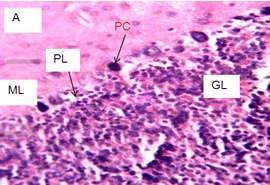
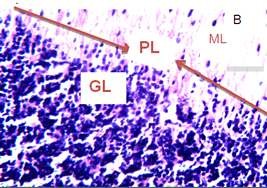



A section of Wistar rat cerebellum of the control group treated with normal saline. Showing normal histoarchitecture of the cerebellar tissue; Molecular layer (ML), Purkinje layer (PL), Purkinje cell (PC) and Granular layer ,(GL). loss purkinje cells (PCS), Degenerating cells (DC), Clumped cells (CC), Disintegrated nuclei (DN) H and E stain (Mag ×250).





A cross section of the cervical spinal segment of the spinal cord anterior horn cell with normal cytoarchitecture cell body (CB), Nucleolus (NC). Nuclei, and congested nuclei (CN). normal cells (NC),loss of nuclei(LN) , loss of neuronal fibres (LF), disintegration nuclei (DN), compacted cells (CC) nerve fibre (NF) and nuclei intact (NI). H&Ex250.
Mean cell volume
Purkinje cells in the cerebellum indicates a significant decrease(p≤0.05) in the mean cellular volume among group treated with Paraquat alone(30mg/kg) when compared with the control and other treated groups An increase in cell volume was also observed among Groups administered 30mg/kg Paraquat/1500mg/kg extract and 30mg/kg Paraquat/750mg/kg extract but not significant when compared to the control and extract group Though, a significant increase (p≤0.01) of cellular volume was noticed in extract treated group (1500mgkg) when compared with all experimental groups and control. Motor
neuron cells in the cervical spinal segment revealed that there was significant increases in cellular volume among group treated with extract alone (1500mg/kg) when compared to the control group and all experimental groups. While group administered with Paraquat alone (30mg/kg) decrease significantly (p≤0.05)when compared with control and
Paraquat/extract combine groups, shows in figure 2b.

Cell count
Figure 2: Mean cellular volume of the Purkinje cells in the cerebellar cortex and Motor neurons in cervical spinal segment (CSS)
Purkinje cells counted in the cerebellum increases significant (p≤0.01) among group treated with tomato extract alone (1500mg/kg) when compared with the control and other treated groups. While an increase (p≤0.05) in cells number was observed among Groups administered
30mg/kg Paraquat/1500mg/kg extract when compared to the control and 30mg/kg Paraquat/750mg/kg extract group, Though, a significant decrease (p≤0.01) of cellular number
was noticed in group treated 30mg/kg of paraquat when
compared with all experimental groups and control as shown in figure 3 Motor neuron cells in the cervical spinal segment revealed that there was a significant increase in cellular number among group treated with extract alone (1500mg/kg) when compared to the control group and all experimental groups. While group administered with Paraquat alone (30mg/kg) decrease significantly (p≤0.05)
when compared with control and Paraquat/extract combine
groups.

Figure 3: Mean cellular number of the Purkinje cells in the cerebellar cortex and Motor neurons in cervical spinal segment (CSS)
DISCUSSION
An increase in forelimb grip mean time was observed among control groups compared to the seventh day which is possibly due to acclimatization to training, a significant increase was also observed among group 30mg/kg + 1500mg/kg Extract animals who were treated with 30mg/kg Paraquat followed by 1500mg/kg tomato extract in day twelve compared to day seven which is possibly due to the ameliorative potential of tomato against neurotoxins which is similar to the finding of Owoeye and Farombi (2015), who reported that treatment of rats with Tomato extract ameliorated the effect of Mercury chloride on cerebellum and increased forelimb strength and movement. In the footprint test, right forelimb stride, left forelimb stride and forelimb base were used to characterize the level of spinal cord damage in the cervical spinal segment of animal rats model used in this study. A decrease in the distance between the left and right forelimb stride was seen in the group that received paraquat alone this may be due to motor impairment elicited by paraquat as described by Liu et al., (1995). An increase in the distance of the left and right forelimb stride in the group that received the fruit extract, this may be due to the cyto-protection elicited by flavonoids which are present in tomato, this is necessary for the maintenance of proper nerve connections as shown by O’Neill et al., (2001).
It was observed that the group treated with 30mg/kg of paraquat had a loss of purkinje cells which could be as a result of paraquat induced cell degeneration. Jayasinghe and Seneviratne (2016) reported degenerative changes in Purkinje cells and granular cells of the cerebellum as a result of paraquat ingestion. This can in turn lead to loss of motor coordination and balance Songin et al., (2010) reported significantly reduced or disturbed motor activity among rats treated with paraquat. The group treated with 30mg/kg of paraquat followed ethanolic extract of tomato showed some viable cells (purkinje cells) with intact nuclei and a few areas of degenerating cells.. These depicts the protective effect of tomato against induced apoptosis or neurodegeneration this is in line with the work of Kokturk et al., (2013) which reported that tomato extract exerted a protective effect against electromagnetic field-induced apoptosis and neurodegeneration in rat Purkinje neurons and granule cells, during pre-and postnatal periods.
The effect of the tomato extract was seen to be dose dependent as the protective effect was more in the group administered high dose of tomato extract than that lower dose.
Histopathological distortion of the cervical spinal segment of the spinal cord section in the group treated with Paraquat alone manifested as neurodegenerative changes such as degenerating cell, disintegrating nuclei, congested nuclei, loss of neuronal fibres and perineuronal vaculations when compared with the spinal section of the control are indication of paraquat induced spinal cord lesions this is in line with the findings of Ren et al., 2009 who reported that repeated doses of Paraquat (10 mg/kg gavage daily for four months or 10 mg/kg intraperitoneal injection twice weekly for three consecutive weeks) induced damage to the cells in substantia nigra pars compacta (SN) in mid brain sections from mice. Chen et al.(2010a , 2010b) who also demonstrated that after treatment with paraquat which was given orally once daily for 28 consecutive days to mice, cells in the hippocampus were irregular, and cytoplasm was found to be condensed. Number of Nissl bodies found there was reduced and apoptotic or necrotic neurons were observed. Increased response latency was also noted in animals given paraquat. A significant decrease in cerebellar cell volume among animals that received 30mg/kg of Paraquat, and a non significant decrease in cell volume among of animals that received 30mg/kg of Paraquat followed by 1500mg/kg of tomato extract and 1500mg/kg of tomato extract decreased when compared to the control group. A significant decrease in cell number of animals in group II,III and IV and an insignificant increase in the number of cells among animals of group v when compared with the control group was observed.
A decrease in the cell number could be as a result of induced apoptosis by Paraquat. Though a cell could be present with intact nucleus, decrease in cell volume may depict impairment in the normal cellular activity such as Energy metabolism, Enzyme and substrate concentration, protein synthesis, cell division which in turn could affect the normal function of a tissue or an organ. The significant decrease in cell number and volume is possibly due to the action of Paraquat, this finding is similar to that of Lou et al., (2012) who reported a significant decrease of viability and significant increase of apoptosis in dopermegic neurons as a
result of oxidative damage and also the work of Chen et al., (2010a) which showed that after treatment with Paraquat for 28 days, cells in the Hippocampus were irregular and cytoplasm was found to be condensed with number of cells reduced. The increase in cell volume and cell number in some of the groups could be attributed to the ameliorative effect of tomato as a result of Its antioxidative property as also reported by Gonz´ales-Vallinas et al., (2 013) Who reported that Tomato contain carotenoid and its function related to their antioxidant power.It was observed that there was a decrease in cell volume and cell number in the group treated with 30 mg/kg of paraquat when compared to the control which will interrupt proper nerve connections which in turn will affect motor impulse conduction and affect motor action, this is in line with the study of Chen et al., 2010 who observed that number of nissl bodies found there could reduce due apoptotic or necrotic neurons upon administration of paraquat. Increase in cell volume and cell number in the cervical spinal is in concordance with the work of Esposito et al., (2002) who showed that protection of cells in culture against diverse insults (glutamate, AB peptide, and others) by flavonoids has proved to be a useful approach.
CONCLUSION
Paraquat dichloride induces neurotoxicity and damage to the cerebellum and cervical spinal segment of the spinal cord. This is Manifested as neurodegenerative changes such as degenerating cell, disintegrating nuclei, congested nuclei, loss of neuronal fibres and peri-neuronal vaculations which in turn affects motor coordination and balance and histomorphometry of the cerebellum and cervical spinal segment. Tomato has a neuroprotective potential against paraquat induced spinal cord lesion in adult male Wistar rats by maintaining the cytoarchitecture of the cervical spinal segment. This could be consequent on the presence of antioxidant properties and phytochemicals present in tomato.
Conflict Of Interest
The authors hereby declare that, the manuscript has not been submitted for publication anywhere, the authors declare also that there is no conflict of interest in the present study.
REFERENCES
- Abdulwahid AI and Ahmad KH (2010). Environmental toxins and Parkinson’s
disease: putative roles of impaired electron transport chain and oxidative stress, Toxicology Induced Health; 26(2):121-128.
- Baharuddin, M RB, Sahid I B, Noora M.A, Sulieman N and Othman, (2011).Pesticide risk accessment; a study on inhalation and deremal exposure to 2, 4-D and paraquat among Malaysian paddy farmers. Journal of Environmental Health, 46:600-607.
- Bao F, Liu D. 2002.Peroxynitrite generated in the rat spinal cord induces neuron death and neurological deficits. Neuroscience 115:839- 849
- Canene-Adams, K., J.K. Campbell, S. Zaripheh, E.H. Jeffery and J.W. Jr. Erdman, 2005.The tomato as a functional food.J.
Nutrition., 135: 1226-1230.
- Carolina Vaccari , Regina El Dib , Huda Gomaa Luciane C Lopes , João Lauro de C a m a rg o (2 0 1 9) . P a r a q u a t a n d Parkinson’s disease: a systematic review and meta-analysis of observational studies. J Toxicol Environ Health B Crit Rev , 22(5-6):172-202.
- Carter R.J.A, Jennifer Morton, and Stephen B. D ( 2001 ) .Current Protocols in Neuroscience; 8.12.1-8.12.14. Chen Q, Niu Y, Zhang R, Guo H, Gao Y. (2010). The toxic influence of paraquat on hippocampus of mice: involvement of oxidative stress. Neurotoxicology, (3): 310-6.
- Chen Q., Niu Y., Zhang R., Guo H., Gao Y., Li
Y. and Liu R., (2010a). The toxic influence paraquat on hippocampus of mice: involvement of oxidative s t ress. Neurotoxicology 31(3):310-6.
- Costa KM, Maciel IS, Kist LW, Campos MM, Bogo MR (2014) Pharmacological Inhibition of CXCR2 Chemokine Receptors Modulates Paraquat-Induced Intoxication in Rats. Pharmaceutical letter of science one 9(8): e105740.doi:10.1371/journal.pone.0105740
- Dinis-Oliveira, R.J., Duarte J.A., Sanchez- Navarro A., Remiao F., Bastos M.L. and Carvalho F., (2008). Paraquat poisonings: Mechanisms of lung toxicity, clinical
features and treatment. Critical Review Toxicology, 38: 13-71.
- Ecobichon, Donald J. (1991). Toxic Effects of Pesticides in Casarett and Doull’s Toxicology.The Basic Science of Poisons.Fourth Edition.Mary O. Madur, John Doull, and Curtis D. Klaassen editors Pergamon Press, NY.
- Esposito K, Nappo F, Marfella R, Giugliano G. ( 2002 ) . Inflammatory cytokine concentration are acutely increased by hypoglycemia in humans: role of oxidative stress. Circulation; 106: 2067-2072.
- Ford NA, Elsen AC, Zuniga K, Lindshield BL, Erdman JW. (2011). Jr Lycopene and apo-12′-lycopenal reduce cell proliferation and alter cell cycle progression in human prostate cancer cells. Nutritional Cancer; 63:256–263
- Gonz´ales-Vallinas M., Gonz´ales-Catej´on M., Rodr´ıguez-Casado A. and Ram´ırez de Molina A., (2013). Dietary phytochemicals in cancer prevention and therapy: a complementary approach with promising perspectives, Nutrition Reviews, vol. 71, no. 9, pp. 585–599.
- Jayasinghe SS. And Sereviratne S A., (2016), Neurotoxic effect of paraquat, Galle Medical Journal, vol 21(2).
- Kokturk S., Melda Y., Saadet D. C., Elif G. D. and Cimbiza A., (2013). Effect of Lycopersicones culentum extract on apoptosis in the rat cerebellum, following prenatal and postnatal exposure to an electromagnetic field, Experimental and therapeutic medicine, 6: 52-56.
- Liu D, Yang J, Li L, McAdoo DJ. (1995). Paraquat—a superoxide generator kills neurons in the rat spinal cord. Free RadicBiol Med 18:861-867.
- Liu D. (1994). An experimental model c o m b i n i n g m i c r o d i a l y s i s w i t h electrophysiology, histology, and neurochemistry for studying excitotoxicity in spinal cord injury: Effect o f NMDA and kainate. Molecular Chemistry on Neuropathology 23:77-92.
- Lou D., Chang X., Li W., Zhao Q., Wangb Y. and Zhou Z., (2012). Paraquat affects the homeostasis of dopaminergic system in PC12 cells, Journal of Pesticide Biochemistry and Physiology, 103:81–86.
- Marrs, T.C and Adjei A., (2003). Paraquat, Journal ofMedical Plant Research 1:203- 266.
- O’Neill M, Hicks C.A, and Ward M.A. (2001). LY393615, a novel neuronal Ca 2+ a n d N a + c h a n n e l b l o c k e r w i t h neuroprotective effects in models of in vitro and in vivo cerebral ischemia. Brain Research, 888: 138- 149.
- Owoeye O. and Farombi E.O., (2015). Tomato pomace protects against mercuric chloride-induced neurodegeneration and motor abnormality in adult rat, International Journal of Biological and Chemical Science, 9(3): 1142-1153.
- Palozza P, Catalano A (2012). Effect of tomato product on cholesterol metabolism, Ann Nutrition Metabolism 61(2): 126-134.
- Podprasart V, Satayavivad J, Reingrojpitals S, Walairat P, Wananukul W., (2007). No direct hepatotoxic potential following a multiple low dose paraquat exposure in rat as related to its bioaccumulation. Toxicolleff: 170: 193-202.
- Raghu, K., Mahesh V., Sasidhar P., Reddy, P. R., Venkataramaniah, V and Agrawal A. (2013). Paraquat poisoning: A case report and review of literature journal of Family community Meicine. 20: 198-200.
- Ren J.P., Zhao Y.W and Sun X.J (2009). Toxic influence of chronic oral administration of paraquat on nigrostriatal dopaminergic neurons in C57BL/6 mice; (19): 2366-2371. respiratory syncytial virus-F protein induces
a systemic immune response. Transitional Resources; (9): 127-135.
- Riso P, Vigioli F, Grande S, Guarnieri S, Gardama C. 2006, Effect of tomato-based drink on markers of inflammation, immunodulation and oxidative stress,
Agricultural food journal: 54(7): 2563-2566.
- Songin M, Strosznajder JB, Fitał M, Kuter K, Kolasiewicz W, Nowak P,andOssowska K.( 2010). Glycogen Synthase Kinase 3b and its phosphorylated form (Y216) in the paraquatinduced model of parkinsonism. Neurotoxicity Research
- Tamashiro KLK, Wakayama T, Blanchard RJ, Blanchard C and Yanagimachi R. (2000). P o s t n a t a l g r o w t h a n d b e h a v i o r a l development of mice cloned from adult cumulus cells. Biological Reproduction, 63: 328–334. Toxicology.Volume 3.
- Wathita P., Supaporn M., Terdthai T., Jintanaporn W., Wipawee T., Chonlathip T., s Bungorn S. and Panakaporn W., (2013).Acute toxicity study of tomato pomase extract in rodents, Online Journal of Biological Science, 13(1):28-34.
- Winek, CL, Wahba, WW, Winek, CL Jr., Winek-Balzer, T., (2001).Winek’sdrug and chemical blood level data.




